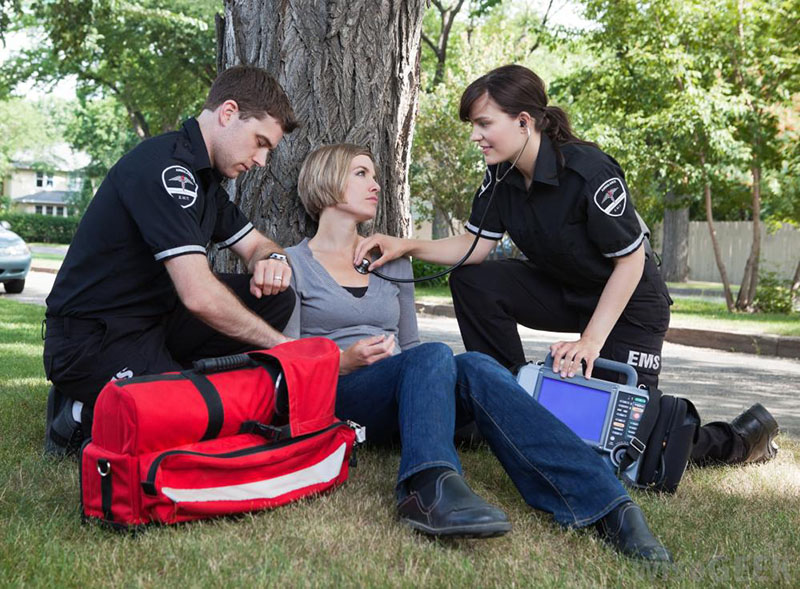Emergency medical services (EMS), a vital and noble profession, offers an exciting job that revolves around saving lives and providing essential healthcare. If you’re considering becoming an Emergency Medical Technician (EMT), or even making the leap to the highly regarded job of a Paramedic then you will be entering an industry with tremendous potential for growth and a high demand for highly skilled professionals. This article will guide you through the steps to becoming an EMT, paramedic and explore all of the options for training that are readily available.
Understanding the importance of EMTs & Paramedics
First responders and Emergency Medical Technicians and Paramedics provide prompt medical treatment in an emergency situation. They are trained to evaluate patients, administer essential medical procedures, as well as transport patients in a safe manner to hospitals for further treatment. Paramedics, EMTs, and other medical professionals play an essential role in stabilizing a patient in critical situations, making split second decisions, and offering compassionate care to patients who are in distress. For more information, click Steps to become a Paramedic

Step 1: Become an EMT
To be an EMT You must finish the necessary educational and training that can differ based on the level of certification you wish to achieve. There are three different degrees of EMT certification.
1. EMT-Basic (EMT-B) It is the simplest certification and needs between 100 and 150 hours of training. EMT-Bs are certified to provide basic medical treatment that includes CPR, bleeding control, and airway management.
2. EMT Intermediate (EMT I): EMT I requires further training, and this can vary by state. In some states, this degree can be combined with EMT B. In other states the courses can range from 200 to 400 hours and includes advanced medical knowledge, intravenous therapy, and other expanded skills.
3. EMT-Paramedic (EMT-P) the highest stage of EMT certification, EMT, requires extensive training, usually running between 1,800 and 1,000 hours. Paramedics are trained to perform advanced medical procedures such as administering medications, reading EKGs and managing airways.
Step 2: Obtaining Paramedic Certification
To qualify as a paramedic, you must first complete the EMTB or EMTI level and gain some experience in the field. You then can apply for the paramedic training program, which lasts between one and two years. This program is comprehensive and will provide you with advanced medical topics, and equip you with the skills and knowledge required to deal with emergency circumstances on your own.
Explore EMT possibilities for training:
You can choose from a range of options in the field of EMT certification, depending on what level you want to reach. EMT training is often provided by community colleges and medical trades schools that offer all levels of certification. These programs offer a blend of classes, hands-on instruction and hands-on training in both field and clinical situations.
Schools and universities provide EMT programs at the level of EMT/Paramedic in case you’re seeking an in-depth, comprehensive EMT training that leads to the degree of a college. These programs provide a more comprehensive understanding of emergency medical services, and offer the user a greater understanding of medical decisions and patient care.
Step 4: Ensure DSHS approved EMS Training:
It is important for aspiring EMTs or paramedics to make sure that the course they pick has been approved by DSHS. The Department of State Health Services (DSHS) approves EMS training courses to ensure that they meet the highest standards of training and competence. You are guaranteed of getting the most effective training when you enroll in a DSHS accredited EMS training program.
Becoming an EMT or paramedic is an extremely rewarding and prestigious career choice. EMTs and Paramedics are first responders who play a vital part in saving lives and offering immediate medical care in emergencies. In order to begin this lifesaving journey, EMTs and Paramedics are required to complete the necessary education and training programs. Depending on the certification level desired, individuals can choose among a range of EMT training options, including medical trade schools and university programs.
When considering possibilities of training, it’s important to confirm that the selected EMS training program is DSHS approved by the DSHS. You can be assured that the education you receive will meet all standards necessary for EMT or paramedic certification.
The demand for skilled emergency medical professionals rises, EMS provides a wealth of job opportunities and opportunities to improve people’s lives. Whether you start as an EMT-Basic or aspire to become a paramedic your commitment to providing vital medical care will pay off with an exciting and meaningful job in emergency medical care.